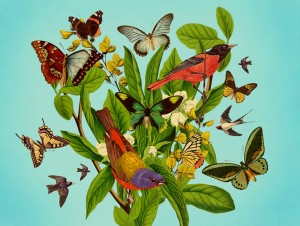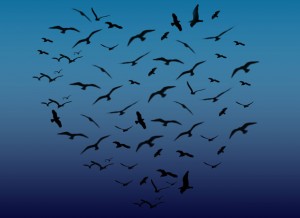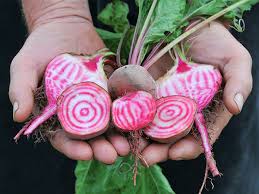 The Yogabliss on-line Moving into Meditation class met this morning. We shared the practice of cultivating compassion. All of us have been deeply touched by the pain and suffering we witness every day. Sometimes it’s really hard not to look away or shut down. The mindfulness practice of cultivating compassion or loving kindness is a way of responding by staying present with what is difficult and also tapping into the love and kindness that truly is our super power.
The Yogabliss on-line Moving into Meditation class met this morning. We shared the practice of cultivating compassion. All of us have been deeply touched by the pain and suffering we witness every day. Sometimes it’s really hard not to look away or shut down. The mindfulness practice of cultivating compassion or loving kindness is a way of responding by staying present with what is difficult and also tapping into the love and kindness that truly is our super power.
We started with a short loving kindness practice inspired by Diana Winston. Diana is Director of Mindfulness Education at UCLA’s Mindful Awareness Research Center. You can practice at home by going to her podcast, Getting Out of Your Head.
We drew on meditation instructor, Oren Jay Sofer including his recent talk, Introduction to Loving Kindness. His very worthwhile talk offers context, instructions and helpful suggestions including a guided meditation.
Next time you need a little breathing break you might check out meditation and author, Sharon Salzberg’s delightful short animation, Where Does Compassion Really Come From?
Explore giving your heart’s attention to Corinna Luyken’s children’s book, My Heart. You’ll find it toward the end of Maria Popova’s post on Favorite Children’s Books of 2019,
Relaxed Reflection
We practice meditation for ourselves and also the world. A world that is deeply troubled. A world that rewards achievement and conquering challenges. A world that values consumption. A world that is often a harsh and lonely place. Our meditation practice is relational. We cultivate the ability to respond to the world’s troubles . . . we can do it one moment at a time, one heartfelt intention at a time, one relationship at a time.
Meditation teacher, Oren Jay Sofer, describes his experience with long time practice:
 What I have come to understand is that rather than cutting us off from one another, this path brings us into the web of life more fully, illuminating the intricate nature of our relationships and nourishing a tender appreciation for the interdependence and vulnerability of all life. The more one examines the teachings, the practice and the way of life taught by the Buddha, the more clearly one sees that this path is at its heart relational. This realization moves us to act.
What I have come to understand is that rather than cutting us off from one another, this path brings us into the web of life more fully, illuminating the intricate nature of our relationships and nourishing a tender appreciation for the interdependence and vulnerability of all life. The more one examines the teachings, the practice and the way of life taught by the Buddha, the more clearly one sees that this path is at its heart relational. This realization moves us to act.
Every week we come together in relationship – we touch each other’s lives in a meaningful way. We reflect on the interdependence and vulnerability of life. We care about those who are suffering the affects of illness – the illness of virus, the illness of racial injustice, the illness of our planet. Our hearts and minds are part of this whole everchanging world.
 We can orient ourselves and our practice within this constellation of relationship. We begin by cultivating an inner awareness of our mind states and our intentions. We bring a relational awareness to the effects of our thoughts, words and deeds. Our being here together expresses openness, receptivity and caring. We can sense each other’s presence and our friends who aren’t with us today. . . we feel empathy for each other . . . some of us are old friends and some of us are new friends and we can feel our connection . . . Maybe you can kindle a sense of loving kindness toward someone here today knowing they may be struggling . . . you can imagine them, sense their presence . . . you can offer them your heart felt wish one phrase at a time . . . May you be safe and protected . . . May you be deeply happy and peaceful . . . May you live your life with ease . . . Giving your heart’s full attention with each phrase in this spirit of offering . . .
We can orient ourselves and our practice within this constellation of relationship. We begin by cultivating an inner awareness of our mind states and our intentions. We bring a relational awareness to the effects of our thoughts, words and deeds. Our being here together expresses openness, receptivity and caring. We can sense each other’s presence and our friends who aren’t with us today. . . we feel empathy for each other . . . some of us are old friends and some of us are new friends and we can feel our connection . . . Maybe you can kindle a sense of loving kindness toward someone here today knowing they may be struggling . . . you can imagine them, sense their presence . . . you can offer them your heart felt wish one phrase at a time . . . May you be safe and protected . . . May you be deeply happy and peaceful . . . May you live your life with ease . . . Giving your heart’s full attention with each phrase in this spirit of offering . . .
This direct experience leads us to the realization that all of living is in relationship. Our meditation isn’t separate from the ones we love, the ones we don’t know or even the ones we find difficult. So much can be revealed when we bring awareness to our relationships. So much can be healed when we offer compassion and loving kindness to ourselves and others. So much potential can be realized when we transform our conflicts into shared problems we can solve together.
 In her beautifully illustrated short animation, Where Does Compassion Really Come From, meditation teacher and author Sharon Salzberg describes how we can bring compassion into our daily lives. We give our full attention to whomever is before us. We really see them. We might be surprised at how much more colorful our world becomes. Sharon says:
In her beautifully illustrated short animation, Where Does Compassion Really Come From, meditation teacher and author Sharon Salzberg describes how we can bring compassion into our daily lives. We give our full attention to whomever is before us. We really see them. We might be surprised at how much more colorful our world becomes. Sharon says:
. . . sometimes we think of compassion as a gift . . . or some kind of spontaneous reaction . . . I think of compassion as a natural result of paying attention. That means we can continue to cultivate it.
So we start where we are, here today. The Dalai Lama has said that whatever the mind frequently thinks about and ponders will become its inclination. In his recent talk, Oren Jay Sofer, describes this capacity of heart and mind:
 . . . Our nervous system, our heart, our capacity to feel is like an incredibly fertile patch of earth. It’s like the most fertile soil you can envision, rich, moist, perfect weather, sunshine whatever kind of seeds you plant there are going to grow. That’s what our heart and mind are like. Whatever we do with our heart and mind starts to shape it. . . . What we do with our mind in each moment has a cumulative effect in shaping its patterning and functioning.
. . . Our nervous system, our heart, our capacity to feel is like an incredibly fertile patch of earth. It’s like the most fertile soil you can envision, rich, moist, perfect weather, sunshine whatever kind of seeds you plant there are going to grow. That’s what our heart and mind are like. Whatever we do with our heart and mind starts to shape it. . . . What we do with our mind in each moment has a cumulative effect in shaping its patterning and functioning.
Oren goes on to offer us encouragement in our practice he says:
. . . this word Metta . . . encompasses nuances of friendliness, warmth, kindness, universal love, . . . unconditional sense of friendship and goodwill. . . . Metta is thought about as a gentle rain moistening the earth . . . falling to the ground without picking and choosing . . . The Dalai Lama translates it as basic human warmth . . . an innate quality, something that we all have. It’s not so far, it’s not out of reach. . . . when you see a good friend you haven’t seen for a while . . . there’s that rush of warm and goodwill. . . that’s Metta.
 When you hold the door for someone and there’s the briefest flash of a smile. That’s Metta. It’s imbued with the spirit of generosity. . . of giving our heart’s attention and goodness to another. . . . We have this potential . . none of us would be here without some real doses of kindness in our lives . . . Not only do we have this potential . . . we can strengthen it, we can deepen it. So instead of it being a random occurrence or what happens with those closest to us it becomes sort of a default for how we live. It can become an orientation to our lives. It’s what we fall back on . . . seeing the goodness in one another. . . . being aware of that common thread of our humanity . . . of our connection . . .
When you hold the door for someone and there’s the briefest flash of a smile. That’s Metta. It’s imbued with the spirit of generosity. . . of giving our heart’s attention and goodness to another. . . . We have this potential . . none of us would be here without some real doses of kindness in our lives . . . Not only do we have this potential . . . we can strengthen it, we can deepen it. So instead of it being a random occurrence or what happens with those closest to us it becomes sort of a default for how we live. It can become an orientation to our lives. It’s what we fall back on . . . seeing the goodness in one another. . . . being aware of that common thread of our humanity . . . of our connection . . .
So as we grow stronger in our practice we can expand our circle of care. Our clear, creative and loving minds can imagine new ways in which to engage the world, to help eachother take compassionate action to nurture and safeguard the well being of everyone.
And finally, Corinna Luyken’s children’s book, My Heart, explores giving our heart’s attention in her tender poem:
My heart is a window,
My heart is a slide.
My heart can be closed
or opened up wide.
Some days it’s a puddle.
Some days it’s a stain.
Some days it is cloudy
and heavy with rain.
 Some days it is tiny,
Some days it is tiny,
but tiny can grow…
and grow…
and grow.
There are days it’s a fence
between me and the world,
days it’s a whisper
that can barely be heard.
There are days it is broken,
but broken can mend,
and a heart that is closed
can still open again.
My heart is a shadow,
a light and a guide.
Closed or open…
I get to decide.
